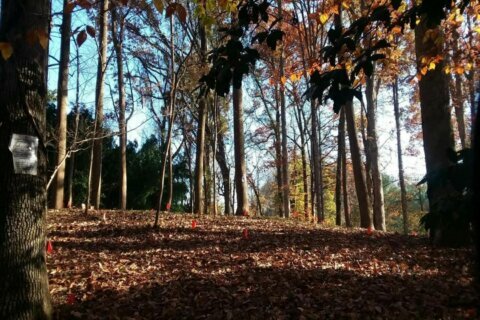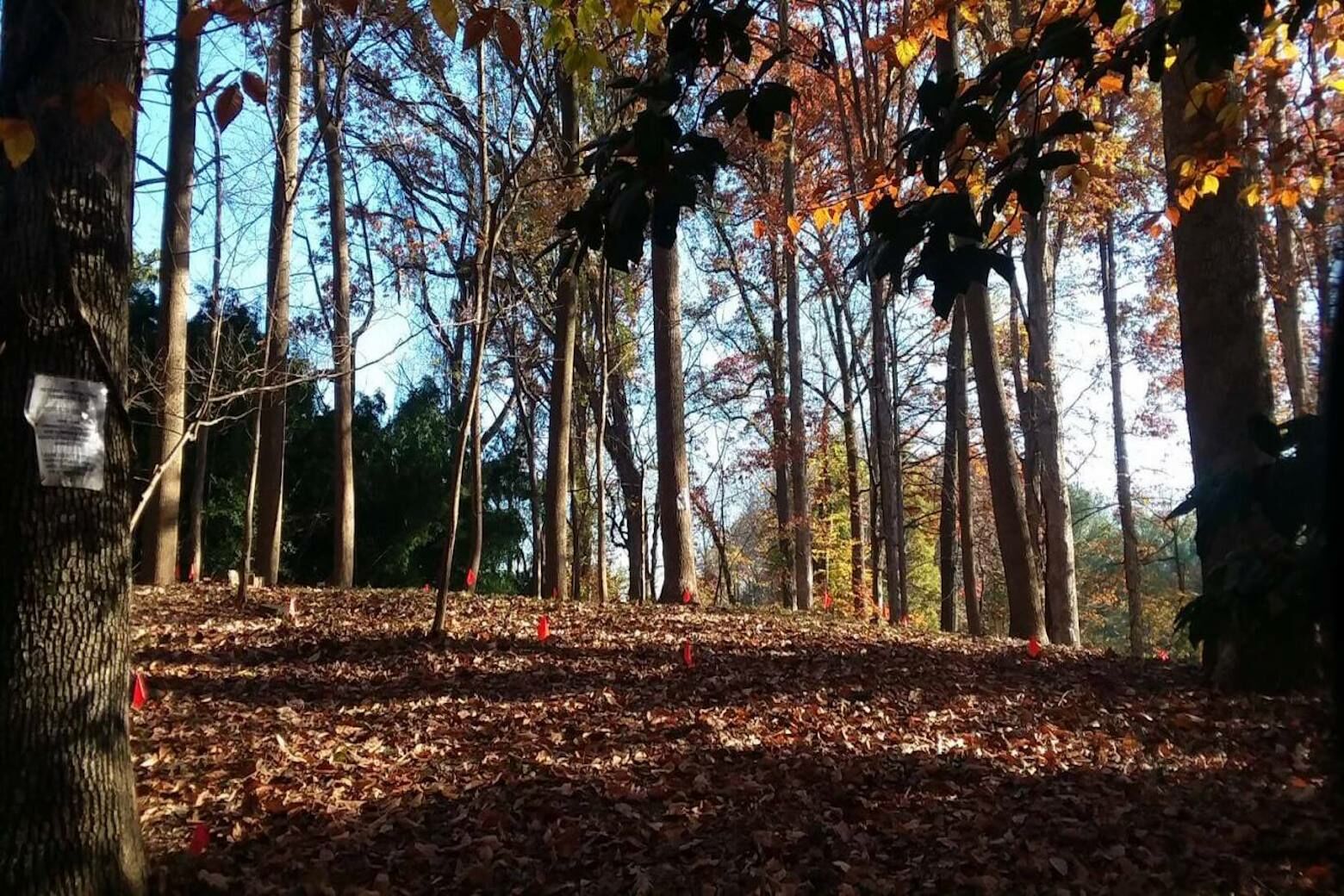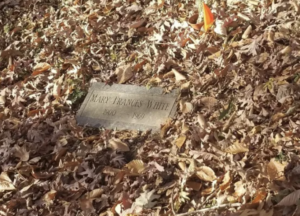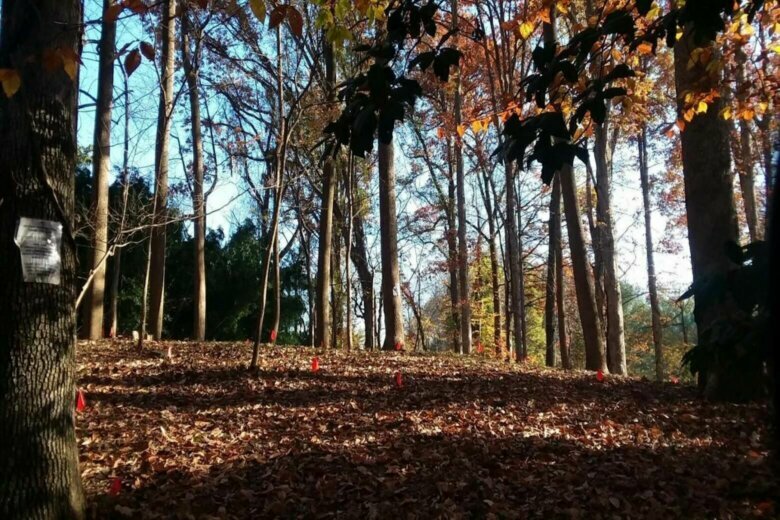This article was republished with permission from WTOP’s news partners at Maryland Matters. Sign up for Maryland Matters’ free email subscription today.


This content was republished with permission from WTOP’s news partners at Maryland Matters. Sign up for Maryland Matters’ free email subscription today.
A historically Black cemetery encroached upon when the Capital Beltway was constructed in the 1960s is again in potential peril, a national preservation organization said on Thursday.
The Morningstar Tabernacle No. 88 Order of Moses Cemetery and Hall, in Montgomery County, was designated one of the nation’s “11 Most Endangered Historic Places for 2021” by the Washington, D.C.-based National Trust for Historic Preservation.
The cemetery and hall were established around 1885 alongside a post-Emancipation Black settlement known as Gibson Grove, according to the trust.

“Residents, some of whom had been formerly enslaved, established a local benevolent society to care for the sick and destitute, bury the deceased, and provide overall support to the local Black community,” they wrote.
“In an act of racial injustice, highway construction in the 1960s ran through the Gibson Grove community and took a portion of the cemetery site,” they added.
The National Trust said that the Maryland Department of Transportation’s plan to widen I-495 “further threatens the cemetery, where known burials span from 1894 to 1977.”
A link is provided on the National Trust for Historic Preservation’s website, where the announcement is posted, for people who want to “tell the Maryland Department of Transportation and the Federal Highway Administration to protect this historic African American cemetery.”
MDOT is well aware of the cemetery and of concerns that the highway-widening plan being pushed by Gov. Lawrence J. Hogan Jr. (R) will harm it.
In a letter released on Thursday, Jeffrey T. Folden, the top agency official in charge of the project, said the state has taken many steps to protect — and avoid encroaching upon — the site.

In January, he wrote, State Highway Administration crews “began removing invasive bamboo at the cemetery to facilitate the documentation of marked graves and the archaeological site of Moses Hall.”
“Once the invasive bamboo was removed, maintenance crews were called upon to stabilize the soil and divert stormwater by planting grass seed, laying appropriate soil matting, and straw bales,” Folden added.
He said that a “remote sensing survey” will take place this summer to locate unmarked graves. “All of this work is being closely coordinated with the Friends of Moses Hall.”
The state has installed a metal gate to keep trespassers out, removed litter and will be adding plantings “where appropriate.”
“Extensive coordination with leadership from the First Agape African American Methodist Episcopal Zion Church is also ongoing to address existing stormwater issues and identify appropriate mitigation for any potential impacts to the property,” Folden wrote.
MDOT is working toward completion of a federally required environment impact statement on the controversial I-495/I-270 project and has chosen a consortium of international firms to handle design and other “pre-development” work.
Folden said that SHA has “continued to refine the design of the high-occupancy toll lane improvements and successfully developed new design options that avoid ground disturbance within the cemetery boundary. The new design will be included as part of the Final Environmental Impact Statement.”
The Maryland Chapter of the Sierra Club applauded the National Trust’s decision to list the cemetery on its list of endangered historical sites.
“The over-120-year-old Morningstar cemetery and hall site has gone from being unmarked on Maryland Department of Transportation maps for the proposed I-495 & I-270 toll lane expansion project to inspiring community group, county, and congressional support and even state bills,” the organization said in a statement.
“And now it is being given national importance as one of America’s 11 most endangered historic places.”
Two Montgomery County lawmakers — Sen. Susan Lee (D) and Del. Sara Love (D) — introduced legislation earlier this year to prohibit MDOT from using its eminent domain power “for a highway project that encroaches on or adversely affects certain cultural and historic sites and properties” without the approval of the General Assembly.
MDOT opposed the legislation on the grounds that it “contains insufficient definitions and property types that would affect the current processes in place for consideration of historical cemeteries, bridges, and structures.”
“In the bill, there is no legal definition for what constitutes an ‘African American Cemetery, Burial Ground, or Cultural Heritage Site,’” the agency added.
The measures died without a vote.
bruce@marylandmatters.org








